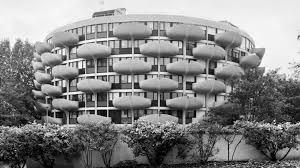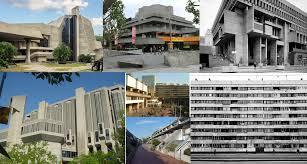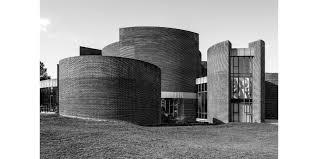Brutalist architecture, a movement that emerged in the mid-20th century, is characterized by its stark, geometric designs and the use of raw concrete. This architectural style, often perceived as cold and uninviting, has nevertheless garnered a dedicated following due to its bold, unapologetic approach to form and function. Originating in the post-World War II era, Brutalism sought to break away from the ornate designs of previous architectural styles and instead embraced a more utilitarian aesthetic. This essay delves into the origins, key characteristics, cultural impact, and enduring legacy of Brutalist architecture.


The roots of Brutalism can be traced back to the 1950s, with notable architects such as Le Corbusier and the Smithsons pioneering the style. Le Corbusier’s Unité d'Habitation in Marseille, France, is often cited as a seminal example of Brutalism. This residential building showcased the use of béton brut, or raw concrete, which became a defining feature of the movement. The Smithsons, Alison and Peter, further developed Brutalism through projects like the Hunstanton School and the Robin Hood Gardens housing complex. Their work emphasized honest, exposed materials and a straightforward approach to design, aligning with the broader Modernist principles of functionality and simplicity.


Key characteristics of Brutalist architecture include the use of raw concrete, modular elements, and an emphasis on geometric shapes. Buildings in this style often feature exposed structural elements and a lack of decorative finishes, which some critics argue give them a monolithic, fortress-like appearance. However, proponents of Brutalism appreciate these structures for their boldness and integrity, as they often reveal the building process and materials in a way that other architectural styles do not. The aesthetic is both austere and monumental, aiming to convey strength and permanence.

The cultural impact of Brutalism has been significant, particularly in the context of social housing and public buildings. In the post-war period, many governments embraced Brutalism for its cost-effective construction methods and utilitarian design, leading to the creation of numerous housing projects, schools, and government buildings. These structures were intended to symbolize a new, egalitarian society and to provide functional, durable spaces for the public. Despite the initial optimism, many Brutalist buildings fell out of favor in the late 20th century, criticized for their perceived coldness and association with urban decay.

Despite its controversial reception, Brutalist architecture has experienced a resurgence in recent years, with a growing appreciation for its bold, uncompromising aesthetic. Preservation efforts have increased for many iconic Brutalist structures, recognizing their historical and architectural significance. Additionally, contemporary architects and designers draw inspiration from Brutalist principles, adapting them to modern contexts and technologies. The enduring legacy of Brutalism lies in its radical departure from conventional aesthetics and its challenge to preconceived notions of beauty and functionality in architecture.

In conclusion, Brutalist architecture, with its raw concrete forms and geometric precision, remains a powerful testament to the innovative spirit of mid-20th-century design. While it has faced criticism for its stark and unadorned appearance, the movement's commitment to honesty in materials and construction continues to inspire and provoke debate. As contemporary society re-evaluates the architectural achievements of the past, Brutalism stands out as a bold and influential chapter in the story of modern architecture, reminding us of the complex interplay between form, function, and cultural context.
AfriPrime App link: FREE to download...
https://www.amazon.com/Africircle-AfriPrime/dp/B0D2M3F2JT
Brutalist architecture in focus...
-
Unité d'Habitation in Marseille, France: Designed by Le Corbusier, this residential building is a prime example of Brutalism with its rough concrete facade and modular design. The structure includes a combination of residential apartments, shops, and communal spaces, showcasing the versatility of Brutalist principles.
-
Hunstanton School in Norfolk, England: Created by Alison and Peter Smithson, this school features exposed structural elements and a minimalist approach to design. The building's raw, honest use of materials exemplifies the Brutalist ethos of functionality and simplicity.
-
Robin Hood Gardens in London, England: Another project by the Smithsons, this housing complex is known for its stark, fortress-like appearance. The large concrete structures and bold lines of the complex aimed to provide practical and durable housing solutions in a post-war context.
-
Boston City Hall in the United States: This building is famous for its bold geometric shapes and extensive use of exposed concrete. The design includes dramatic overhangs and deep recesses, creating a visually striking and monumental public building.
-
Barbican Estate in London, England: The Barbican is a large residential and cultural complex that includes residential towers, arts spaces, and gardens. The Brutalist design features a mix of concrete structures, elevated walkways, and integrated public spaces, embodying the movement's integration of form and function.
These descriptions highlight the unique features of each building, reflecting the key characteristics of Brutalist architecture.
AfriPrime App link: FREE to download...


